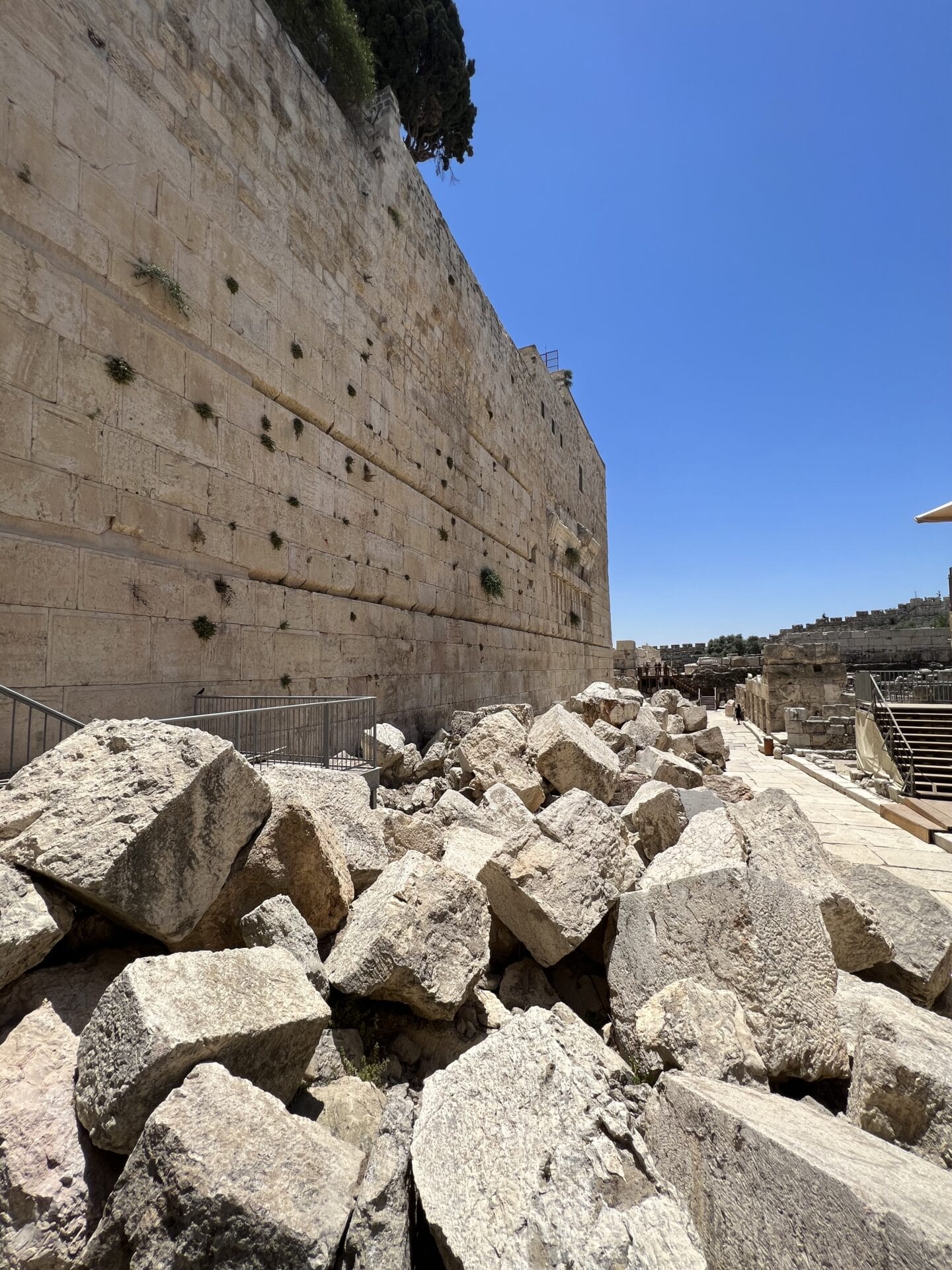
Fallen Stones, Rising Hopes
In Jerusalem, at the foot of the western wall of the Temple Mount -- where the Second Temple stood, near its southern corner, you can see a jumble of large stones, each weighing 2-3 tons. Roman soldiers threw them down when they destroyed buildings on the Mount in the year 70. The Romans burned down the Temple as part of the sack of Jerusalem, the Jewish capital city that had held out under siege for five months. It was the end of the Great Jewish Revolt (66-70).
I thought of these stones at the approach of Tisha b’Av, which marks the date of the destruction of the Temple on the ninth day of the month of Av (roughly August) in the year 70 – Tisha b’Av in Hebrew. This year the date is observed from sundown, August 6 to nightfall, August 7. It’s a day of fasting and prayer. Tradition holds that the First Temple was also destroyed on the same day, and the calendar includes a long list of tragedies that befell the Jewish people on that day, including the expulsion from Spain in 1492. All in all, Tisha b’Av is the saddest day of the Jewish calendar.
Yet the destruction of the Temple is a sign not just of sadness but also of resilience. More remarkable than the fallen stones of the year 70 is the hope that rose in their place. Consider Johanan ben Zakkai, a rabbi who led an important school in Jerusalem while the Temple was standing. He was present in the city during the siege, and he pressed for peace with the Romans, but he went unheeded. He decided to leave the city. Jewish texts say that he was smuggled out in a coffin, since the Romans would let no one out of Jerusalem except to bury the dead. Rabbi Johanan was brought before the Roman commander. He granted the rabbi’s request to set up a school at Yavneh, on what is today Israel’s coastal plain.
Whether that tale is true or not, it is certain that Rabbi Johanan either set up or expanded an academy at Yavneh. It played a crucial role in saving Judaism. The rabbis there came up with a set of principles and practices that made it possible for Jews to serve God even without the Temple by engaging in prayer rather than animal sacrifice. They also emphasized the process of vigorous debate that resulted in the Mishnah about a century later. That codification of Jewish oral law, which supplements the five Books of Moses, later gave rise to the commentaries known as the Talmud. Together, Mishnah and Talmud laid the foundation for mainstream Judaism.
Others, to be sure, reacted to the fall of the Temple differently. To Romans, it was a symbol of success. So, in Rome, the Arch of Titus honors the victorious Roman commander at Jerusalem and later emperor. The arch features an image of Roman soldiers carrying loot taken from the Temple in a triumphal parade. You can still see it in Rome today.
To Christians, the fall of the Temple was both a disaster and a sign of the way forward. For Christians, Jesus replaced the Temple. In the Letter of Paul to the Ephesians (probably written by a disciple of the apostle), the Christian community is described as a holy temple in the Lord, with Christ Jesus as the cornerstone (Eph. 2:19-22). It’s understandable that when Rome’s first Christian emperor, Constantine (r. 306-337), rebuilt Jerusalem as a Christian city, he did not rebuild the Temple. Rather, he made the Church of the Holy Sepulchre, thought to be the site of Jesus’s crucifixion and resurrection, the center of his new Jerusalem.
As terrible a blow as the fall of the Temple was, and as much as it causes mourning, it also gives ground for hope. The Talmud tells the story of a group of rabbis visiting the ruins of Jerusalem. When they reached the Temple Mount, they saw a fox coming out of the Holy of Holies. They all started crying except for Rabbi Akiva, who laughed. When the other rabbis asked him what he could possibly find funny there, Rabbi Akiva replied as follows. One prophecy said that the great city of Jerusalem would be so ruined one day that it would be plowed like a field and the Temple Mount would be like a forest. But another prophecy, linked to the first, said that old men and women would sit in the streets of Jerusalem yet. Rabbi Akiva said that now that he had seen a fox – a forest creature – on the Temple Mount, he was confident that the second prophecy would be fulfilled as well. The other rabbis thanked him for offering them comfort.
It was the genius of the rabbis to compile the Mishnah and, in due course, the Talmud that preserved the Jewish People even in the absence of the Temple, of the priesthood, of Jerusalem, and eventually of Judea. And it was the courage of the Jewish people not to despair. The stones of Jerusalem are not just signs of wailing but of inspiration.